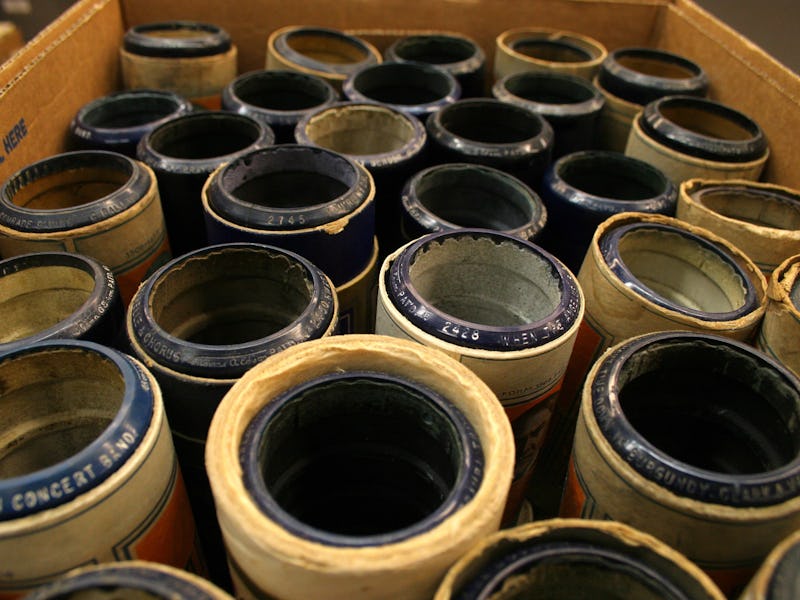Stream 10,000 Rad Vintage Wax Cylinder Recordings From the UCSB Library
Perfect when you want to hear the 1800s.

Ten thousand is an important milestone in most things. Your car’s first 10,000 miles. Your business’ first $10,000. Your first 10,000 Twitter followers. Well, the University of California at Santa Barbara has reached 10,000 digitized 19th and early 20th century cylinder recordings, and it’s throwing a party: Every one of those vintage bad boys is available for free at the project’s website. (Although the format is popularly remembered as “wax cylinder” recording, other materials were used as well.)
Here are a couple of my favorite recordings from the archive: This respectable attempt at poultry-themed stand-up comedy from 1910. This 1898 version of Giuseppe Verdi’s “Anvil Chorus” from Il Trovatore — whistled by a guy named John Yorke Atlee. (You can’t make this stuff up.) This 1913 recording of the Highlanders Bagpipe Band. If you thought bagpipes were a blast before, just wait to hear them in glorious, vintage mono.
The archeophone used to digitize cylinder recordings.
Curator David Seubert tells me UCSB’s collection of antique cylinder recordings is the largest in the world and contains recordings from 1893 till a little after World War I. The digitization project just reached its 10th anniversary. Ten years now is, Seubert says, about a thousand years in internet time. But the digital archive that Seubert and his team created fills a niche.
“For us in the library and archives world, our whole sort of M.O. is to get information into people’s hands for free,” Seubert says. “That’s sort of what we do. Here is body of material — it isn’t on Spotify, it isn’t in Google Play or whatever, and it probably wouldn’t ever make enough money to justify doing it that way.”
Indestructible?
The earliest cylinder recordings were produced on an exhibition basis and not commercially available until 1896. Seubert’s favorite recording from the archive was produced 13 years later: This outstanding bango ragtime melody by the name of “Gondolier” or “Temptation Rag.”
“The real interest in the format is from 1896 to World War I,” Seubert said. “Of course, in the 1920s is when we start to get the first recordings of jazz … but by that time the flat records had come into being.”
And so the cylinder went the way of 8-track. So long, audio formats of old. We knew ye well.